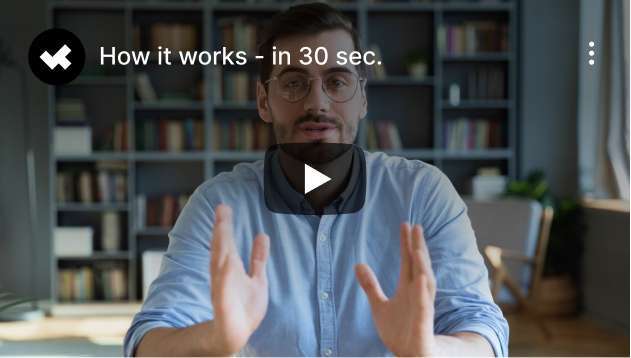Animation is everywhere. From movies and games to mobile apps and digital ads—animation is the language of visual storytelling today. As technology continues to evolve, the demand for skilled animators keeps growing. But it’s not just about getting hired. Knowing what skills required to become Animator, stay inspired, and create work you’re truly proud of. This guide is here to show you what matters and how to build it.
What animators do and what makes a successful one

Animation isn’t just about making drawings move. It’s about breathing life into characters, creating believable worlds, and telling stories that stick. Animators are visual storytellers who use a blend of creativity, technology, and timing to turn simple sketches into immersive experiences.
Whether it’s a goofy cartoon or a realistic action sequence, the animator is the engine behind the magic.
To succeed in the animation industry, you need more than just talent—you need a specific set of animator skills. A good animator understands movement, emotion, and design.
A great animator can also meet deadlines, solve tricky technical problems, and collaborate with different teams. It’s this mix of technical know-how and soft skills that really makes a difference.
10 essential skills required to become an animator

1. Drawing skills
Strong drawing skills are the backbone of animation. You need to understand how shapes, anatomy, and motion work together.
Being able to sketch characters in various poses helps you create realistic and expressive animation. A well-drawn frame saves hours of editing later. Even in 3D animation, knowing how to draw helps you plan your poses and understand character dynamics.
Top animation schools still require life drawing classes for this reason. Drawing isn’t just about art—it’s about understanding how things move and behave. Try attending figure drawing sessions, sketching from real life, and practicing gesture drawing to boost your speed and accuracy.
Plus, you’ll often need to design characters or scenes from scratch. That creative spark needs a solid foundation. Your sketchbook becomes a sandbox for ideas—and your skills will grow every time you pick up the pencil.
2. Proficiency in animation software
Animation software is your main tool—like a chef’s knife or a carpenter’s hammer.
Programs like Adobe After Effects, Toon Boom, Blender, and Maya are industry standards. You don’t need to master them all, but you should be confident in at least one. Each one offers different strengths, so explore them and choose what fits your goals.
Many job listings mention animation software as a must. That’s because employers want you ready to jump in without weeks of training. Take online tutorials, enroll in beginner-to-advanced courses, and start your own small projects to learn hands-on.
Being fluent in software also lets you explore effects, rigging, and transitions that bring scenes to life. You’ll be able to experiment, refine, and truly take control of your animation process.
3. Storytelling
Great animation tells great stories. That means understanding structure, emotion, and pacing.
Every movement you animate needs a purpose. Is your character excited? Angry? Tired? Good storytelling ensures their actions make sense. Your animation becomes more than just motion—it becomes meaningful.
Studios value animators who can pitch and improve story ideas. It’s not just about movement—it’s about meaning. Try reading screenwriting books or taking storytelling workshops to understand narrative arcs, beats, and character development.
Mastering this helps you create scenes that connect with the audience and stick in their memory. Think of Pixar—not just how their characters move, but why they move the way they do. That’s storytelling in action.
4. Understanding of timing and motion
Timing is what makes animation feel natural—or not.
The classic animation principle of “timing and spacing” determines how fast things move and how they interact. A bounce, a blink, or a run all have different rhythms. Without proper timing, even the best-drawn frames can look robotic.
Animators use timing to add drama, comedy, or realism. It’s a science and an art. The famous 12 Principles of Animation—especially timing, squash and stretch, and anticipation—are must-know tools.
Good timing can turn a stiff animation into something believable and captivating. Practice by observing real-life motion and acting it out yourself. You’ll start to feel the flow of movement and know exactly when to hit the right frame.
5. Character design
Characters are the heart of most animation projects. Designing them takes a mix of creativity and practicality.
Your designs need to be visually appealing but also easy to animate. A character with too many details can slow down production. Focus on strong silhouettes, simple shapes, and repeatable features.
Many animators also create turnarounds and expression sheets to guide the rest of the team. Learning to think in 360 degrees—how a character looks from every angle—will take your designs from flat to fantastic.
Knowing what makes a character memorable—shapes, silhouettes, and colors—is a key animation skill. Study your favorite characters and break down why they work. Then try building your own from scratch.
6. 3D modelling
In the world of CGI, 3D modelling is a must.
You’ll often need to build characters, environments, or props. Programs like ZBrush, Blender, or Maya are essential here. Start with basic geometry and work your way up to organic shapes and complex textures.
Even if you’re not the main modeler, understanding the process helps you animate better. You’ll grasp how forms are constructed and what limits exist within a model.
Knowing how objects are built means you can rig and pose them more effectively. It also opens doors to freelance gigs and full-time roles beyond animation.
7. Problem-solving
Animation is full of surprises—and not always the fun kind.
You might run into bugs in the software, issues with rigging, or gaps in the storyboard. What do you do when your scene won’t render or your rig breaks halfway through a pose?
Good animators don’t panic—they troubleshoot. They ask questions, experiment, and find solutions. Develop your problem-solving muscles by working on small projects where you wear multiple hats.
This ability keeps projects moving and makes you a team player. And let’s be honest—studios love someone who can fix things without needing constant supervision.
8. Communication
You’ll often work with directors, writers, sound designers, and other animators. Clear communication is key.
Being able to give and receive feedback helps the whole project. Learning to take critique without ego and offer it with kindness is an underrated superpower.
Misunderstandings can cost time and money. But good communication avoids that. Use visual references, explain your thought process, and don’t be afraid to ask questions.
It also helps you pitch ideas and explain creative choices. A confident animator who can express their vision is a valuable asset on any team.
9. Attention to detail
Little things matter in animation.
A small flick of the wrist, a subtle shift in posture, or a barely-there raised eyebrow can shift the entire mood of a scene from curious to suspicious, or from calm to heartbroken. These micro-movements—so tiny you might miss them if you blink—are where the soul of animation lives.
Good animators know how to find those little beats and use them to make characters feel real. They’re not just moving shapes—they’re building emotional experiences that speak louder than words ever could. And it’s not just instinct; it’s practice.
You can start by studying real-life references. Pull up videos of people walking, talking, crying, laughing. Break them down frame by frame. Notice how a person leans when they’re tired or how their eyes dart when they’re nervous. Don’t just watch—analyze. Ask yourself: what makes this movement feel believable?
These details may be invisible to the average viewer, but they leave a powerful impression. The audience might not be able to point out what you did—but they’ll feel it. They’ll believe in the character.
When your animation hits just right, with all those tiny nuances in place, it creates a connection. And that’s when you know your animation is truly alive.
10. Time management
Deadlines are real and often tight in the animation industry.
You might have to juggle multiple scenes or work with different teams. Knowing how to prioritize and block out time can make or break your success.
Managing your time well keeps things smooth. It also shows that you’re professional and dependable. Use tools like Trello, Notion, or even a simple calendar to stay organized.
Studios love animators who deliver great work on time. That’s what keeps the lights on—and the credits rolling.
Skills specific to CGI animation

CGI animation has its own challenges and rewards. It’s everywhere now—from blockbuster movies to YouTube videos.
To thrive in CGI, you need to mix technical knowledge with artistic sense. CGI is more than just 3D—it’s about building entire worlds from pixels.
Advanced computer skills
CGI animators work with complex systems. You’ll need to understand rendering engines, shaders, and physics simulations.
It’s not just about knowing which button to press—it’s knowing why it matters. For example, adjusting light bounces in a render can cut render time in half.
Having a strong tech background helps you troubleshoot and optimize. Brush up on coding basics, learn your hardware, and keep your software updated.
Rigging and skinning
Before a 3D model can move, it needs a skeleton and skin.
Rigging is the process of creating joints and controls. Skinning connects them to the model. Done right, they make the animation look smooth and natural.
Animators often need to tweak these systems to get better results. Learn the basics of inverse kinematics, control hierarchies, and deformation.
Understanding this makes your work more flexible and dynamic. It also lets you collaborate better with technical artists.
Physics and movement simulation
CGI lets you simulate gravity, cloth, hair, and fluids.
To use it right, you need to know how real-world physics work. That helps you create believable animation. Ever seen a cape flow too stiffly? That’s a sim gone wrong.
The more realistic the movement, the more immersive the scene. Practice by observing slow-motion videos and applying what you see in your simulations.
Lighting and rendering
Good lighting turns an okay scene into a great one.
CGI animators often work with lighting to create mood and realism. Learn about three-point lighting, rim light, and how shadows add depth.
Rendering is where it all comes together. Knowing how to tweak settings can save hours of production time. Plus, it gives you control over the final look.
Adaptability to new tech
CGI changes fast. New tools, plugins, and techniques pop up all the time.
Staying current means you can use the latest and greatest—and impress clients while you’re at it. Follow forums, watch YouTube tutorials, and never stop experimenting.
Curiosity and a willingness to learn are huge assets in this space. Being adaptable means you stay relevant—and excited about your craft.
Wrapping up
The path to becoming an animator isn’t one-size-fits-all. But no matter your style or niche, mastering these essential skills for animators will take you far. Whether you’re sketching by hand or working in 3D, it’s about creativity, curiosity, and commitment.
Focus on learning a bit every day. Keep pushing your limits. And remember—every frame you animate is a chance to bring something to life.
FAQ
What software do professional animators use?
Most professional animators use software like Adobe After Effects, Toon Boom Harmony, Autodesk Maya, and Blender. It depends on the studio and the project.
Do I need to be good at drawing to become an animator?
Not always—but it really helps. Especially in 2D animation and character design. Even 3D animators benefit from understanding anatomy and motion.
Is animation a good career in 2025?
Absolutely. The animation industry is booming, especially with streaming platforms and video content. Skilled animators are in high demand.
How long does it take to become an animator?
It varies. Some people learn on their own in a few years. Others go to animation school. What matters most is practice and persistence.
What’s the biggest challenge for new animators?
Finding your own style and staying motivated during long projects. But with time and passion, it gets easier and more rewarding.






























